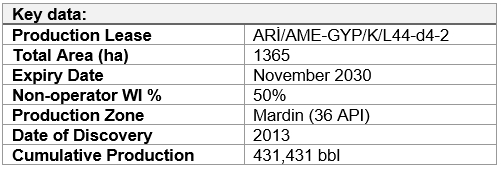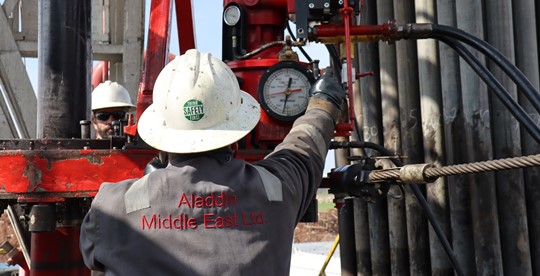Petek
section-f4723ef


The Petek field is located 12 km West of the Karakilise oil field. Petek structure is about 2 km2 within the lease area and it is formed along an East-West trending normal fault as a three-way fault closure. There are a total of four wells drilled in the past 10-year period.
Petek-1 well was first planned to drill for Bedinan sandstones, and it reached a TD of 2,917m in 2013 with condensate and gas shows within both Bedinan and Dadaş formations. After unsuccessful tests associated with borehole issues at these reservoirs, Petek-1 was later re-completed at the Mardin interval. During testing, the well started to flow naturally at 90 bopd 35.9 API light oil and was put into production with an initial rate of 15 bopd in February 2014.
Petek-2 well was drilled as a step-out well to the same reservoir with a TD of 2,274m in August 2017 and put on production in October 2017 with an initial rate of 100 bopd.
Petek-3 production well was spudded in March 2019 and completed at a depth of 2,264m in Mardin Group carbonates in April 2019. 47 bbl of oil were recovered in the DST-1 run at 2,234-2,264m interval and an initial production rate of 14-15 bbl/hour was recorded as of April 2019.
Petek-4 was spudded in August 2022 and drilled to a TD of 2,267 m. The well was put into production with an initial rate of 200 bopd from the Mardin Group carbonates in November 2022.
Currently, Petek-3 and Petek-4 wells are produced with artificial lifting.
For their unconventional resource play potential, both Bedinan and Dadaş should also be considered in the Petek lease since there is a nearby Paleozoic discovery well; Çiksor-3 (2011) well was drilled on the flank of the Petek structure (only 1.5 km SW of Petek-1) and tested gas and condensate from both Bedinan and Dadaş formations. Considering the HC shows in Petek-1, the Petek fault forms a very favorable structural target for testing the deeper Paleozoic plays with a new deep well in the future.


